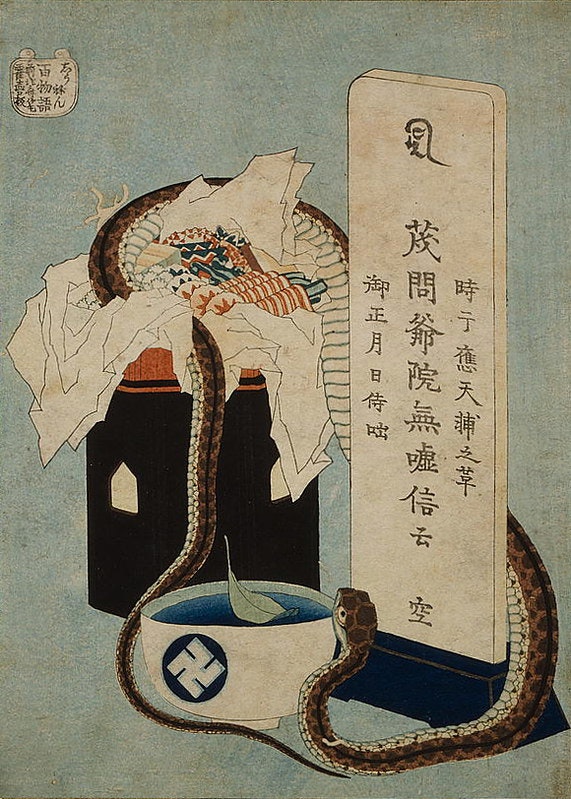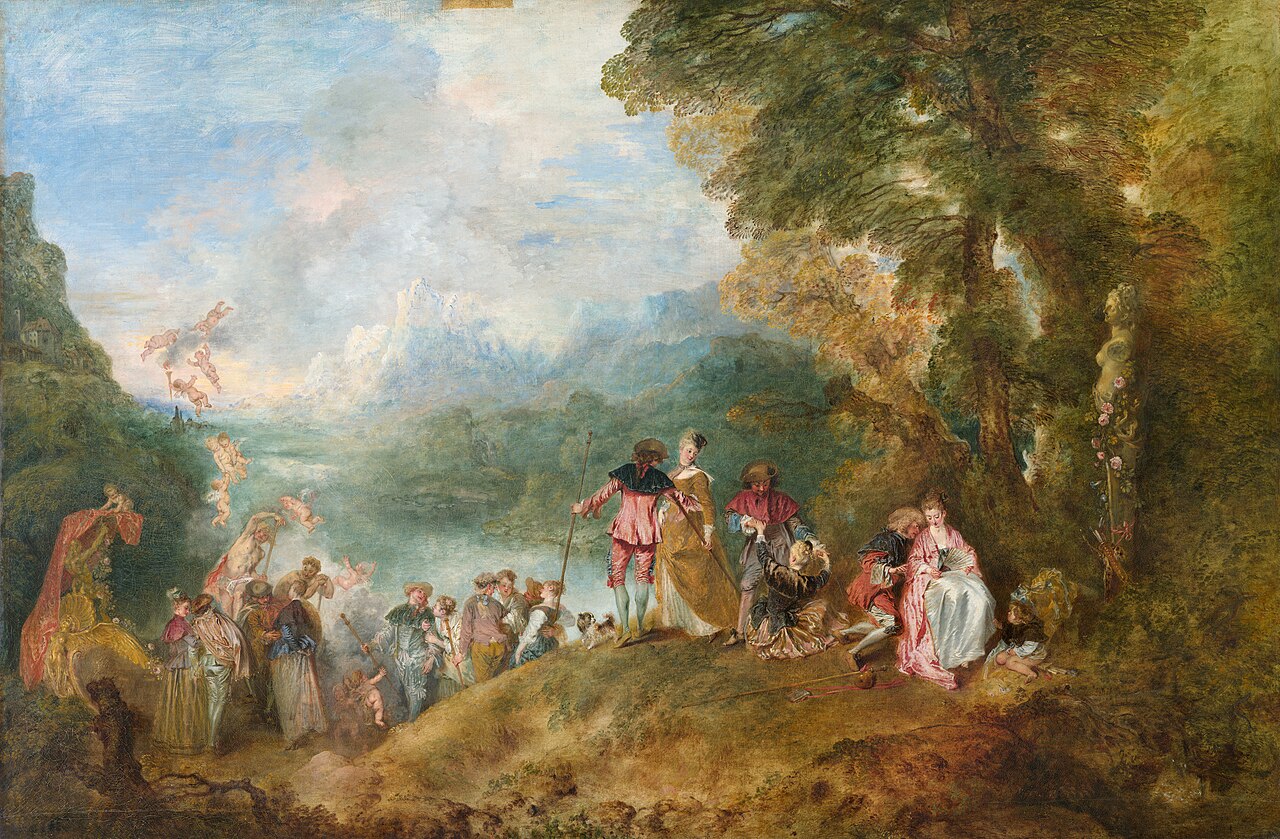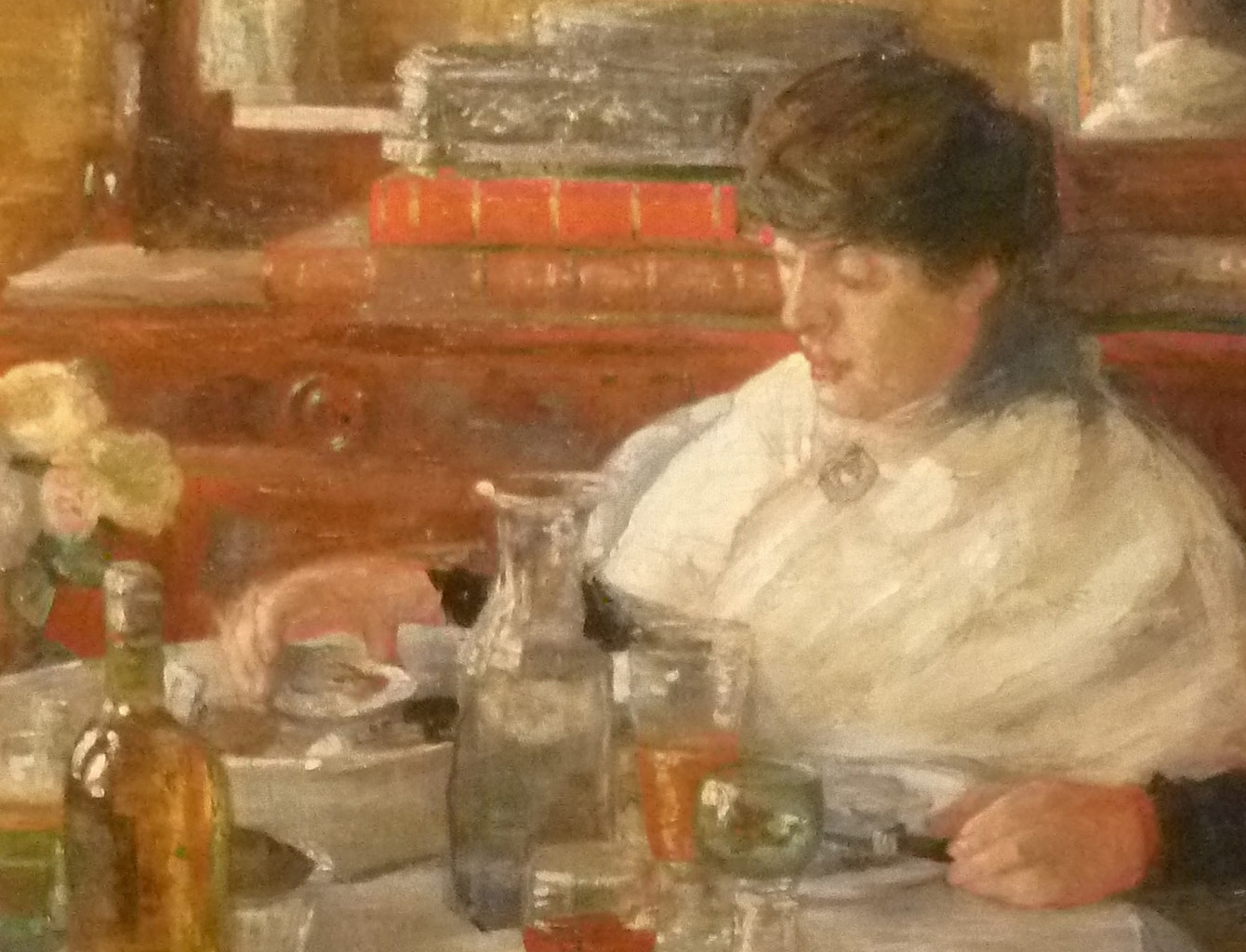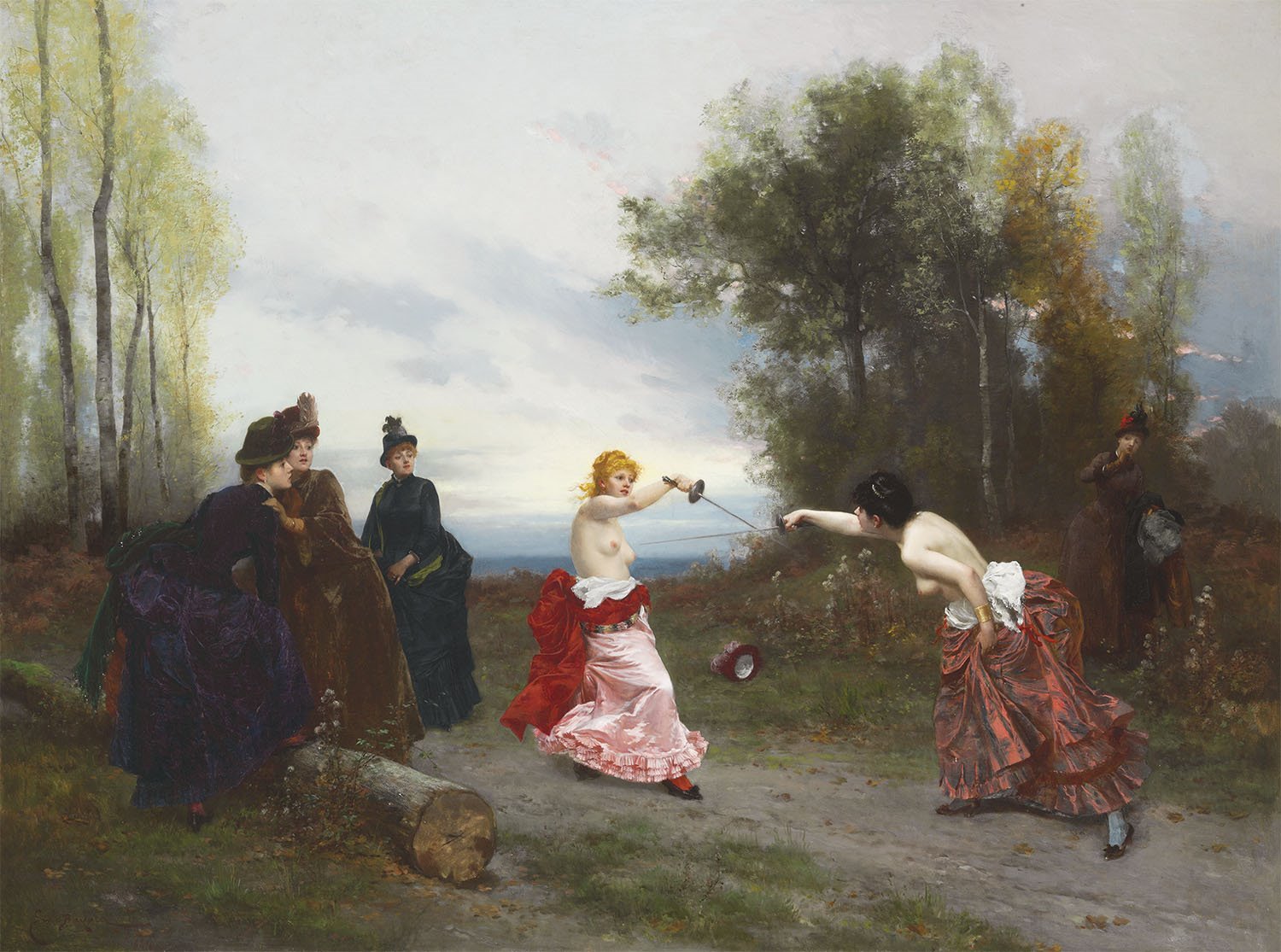
One Hundred Ghost Stories Plate V:
Obsession (Shûnen)

日本語: 百物語・しうねん、中判錦絵
circa 1830
In this print, which was also called „Implacable Malevolence“ you can see a snake, wrapped around a memorial tablet, an ihai, for a Buddhist altar. The picture is much more confusing than the other ones. While the other prints show stories and can be seen as illustrations or interpretations, the Shûnen is a bit more complex. Here we see a picture that is different from the other four. In front of a light blue-grey background we can see a snake that wraps itself around a container with food on top, an upright standing tablet and a japanese tea cup, filled with water and a tea leaf. The snake is interpreted as the representation of obsession after death. During the Edo time in Japan snakes were also seen as the metamorphized spirits of the deceased in kaidan stories. But a snake can also be seen as a symbol of luck and renewal – although it is safe to say that in the context of this series the positive connotation doesn’t fit. Usually, when interpreted as metamorphized of the deceased spirits, they were the incarnation of scorned, jealous, or resentful women who couldn’t find rest even after death.
“The memorial tablet is from 1831 to 1845, when the Tenpō famine killed many people in Japan, including the person on the print: The middle line identifies the posthumous name given to the Buddhist – Momonji (茂問爺), a yokai who appears as a bestial old man who assaults travelers on dark roads. This terror is far worse than witnessing a yokai – becoming one themselves after death.”1
The bowl shows a symbol that is nowadays equated with the darkest regime of the 20th century. But, of course, when Hokusai lived, it had a totally different meaning. The swastika, manji in japanese, is a buddhist symbol which was appropriated by the Nazi party in the early 20th century. In the Indian religions, namely Buddhism, Hinduism, or jainism, it continues to be a symbol of divinity and spirituality. In Buddhist symbolism it represents the auspicious footprints of the Buddha and until the 1930s it was a symbol of auspiciousness and good luck for most of the western world. The little tea bowl is filled with liquid and a tealeaf on the water which is symbolic of a peaceful mind. Again, this print gives a glimpse into Hokusais somewhat ironic humour and the tendency to take himself not too seriously. The picture is full of quite ironic juxtapositions: We have a snake, that symbolises obsession and jealousy which is slithering around the memorial tablet and creeping up on the tea bowl which symbolises calmness and good luck as well as Hokusai himself – the symbol, manji, is also the pen name Hokusai chose in those years while the memorial, a reminder of a horrible famine, is directly placed next to a container with food on top.
I don’t even try to attempt to understand this print (or any of them) but while it looks like the most unspectacular picture, compared to the rest of the series, it is – at least in my mind – the most mysterious of them all.
- https://storymaps.arcgis.com/stories/d5888f338b3242bdbcf853351faba9e2 ↩︎




